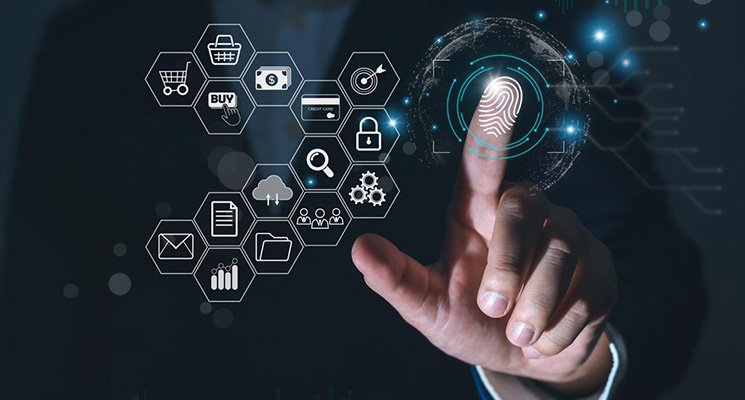Identity Lifecycle Management and HR go hand in hand, so consider how to use these two tools together in your organization. Using an identity logic engine to centralize your identity lifecycle process and integrating directly with your HR software are two ways to achieve this. When implementing Identity Lifecycle Management (ILM) in your organization, it is essential to consider HR as crucial. HR ensures that employees’ access rights are not compromised and are protected from threats. HR is vital in reducing bad actor risks and protecting user identity repositories.
Centralizing The Entire Lifecycle Process With an Identity Logic Engine
The identity lifecycle management phases include the creation of identity, Onboarding, maintenance, reporting, monitoring and Offboarding. Identities typically refer to user accounts in the context of the identity access and provisioning lifecycle, but they can also be computer or service accounts. The (ISC)’s five lifecycle phases can be broken down into a framework for establishing adequate policies and procedures for long-term user account management. Centralizing the identity lifecycle process is a crucial strategy to enhance employee productivity and reduce security risks. Identity logic engines can automate processes across the entire identity lifecycle ecosystem. By centralizing the whole process, organizations can automate numerous events and eliminate the need for help desk intervention.
The core of the identity lifecycle process is the master user record. This centralized database combines all of the identity data for all users within an organization. When an employee is hired, this data is used to create an account in the new organization. In turn, the new employee receives access to applications that the organization provides.
A central database can be accessed through an online backend and via a text file. Once the master user directory is created, organizations can use Single Sign-On to provide secure authorization and authentication.
IAM solutions can create policies, manage access privileges, and monitor user activity. They can also support administrators with tools for automating workflow procedures. These solutions are designed to reduce the time spent on administrative tasks and minimize errors.
Managing digital identities is a complex task. However, the benefits of automation are clear. By centralizing the entire identity lifecycle process, organizations can scale more effectively.
An ILM engine can integrate all the applications and systems within an organization. It can then push data from sources to target systems. Each design is unique, and moving data to the right place can be complex depending on the disparity between the sources.
Giving The Right Users The Proper Access To The Tools And Information
Identity Lifecycle Management (ILM) is a process that enables companies to manage user access to information and resources. In doing so, ILM eliminates manual processes. It automates the administration of IT tasks, such as creating user accounts, monitoring access activity, and offboarding users.
The goal of an ILM is to improve the user experience. This means reducing sign-on time and providing secure remote access. But there are many things to think about before starting an ILM program. For example, it is essential to determine the technology, policies, and processes needed.
A well-planned IAM program requires a wide range of stakeholders to work together. Identify and communicate with these individuals early in the project. Make sure they understand the project’s objectives and have the necessary training.
As with any security function, ensuring the right level of access is essential. Agencies should also consider reducing the number of orphaned accounts, including active employee accounts and Microsoft service accounts for applications no longer in use.
One area of IAM that is evolving rapidly is the handling of non-human entities. These entities can include device makers, operating systems, and other vendors.
To manage these non-human entities, an institution must define its policies for information security, technologies, and identity management. These policies should also address the degree of centralization and the required amount of authentication.
Integrating Directly With HR Software
Integrating Identity Lifecycle Management directly with HR software helps ensure that your employees can quickly and easily access the information they need quickly and easily. This makes it easier for your team to focus on other essential tasks. Moreover, it reduces security risks.
As more people join or leave your organization, it becomes more difficult to synchronize user records. Using a manual process can cause errors and inefficiencies if your company uses a manual process. With an integrated provisioning system, all the changes you make to your HCM system are automatically reflected in other IT resources.
An ideal IAM solution automates routine processes and listens for the user activity. It also provides a single sign-on and multifactor authentication to allow employees to log in to multiple systems.
An integrated system can also resolve problems like poor employee experience and skill gaps. Moreover, it can improve the security of your workforce.
Integrated Identity Lifecycle Management is a process that streamlines the creation and management of digital identities from the moment an individual joins your company. This facilitates and simplifies the process for your staff and IT team.
Traditionally, HR teams have operated in separate tech channels. They have relied on different directory services to manage user information. However, this model needs to be more secure and error-prone.
Today, companies seek to eliminate inefficiencies and gain better control over their resources. For example, HR can streamline the onboarding process and automate the employee data collection process.


